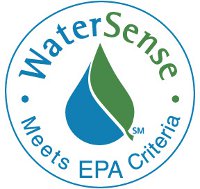Faucets
Faucets

Kitchen and Bathroom Faucets are Among the Easiest Places to Save Water
Faucets are tied with showerheads as the second largest water use for an individual, after toilets. According to the 2016 Residential End Uses of Water Study, faucets make up approximately 19 percent of an individual's total daily water use, or about 11.1 gallons per capita per day.
WaterSense-Labeled Faucets and Faucet Aerators

The best way to reduce water use in the bathroom without behavioral change is to install products that have earned the WaterSense label, thus ensuring their water efficiency and performance. WaterSense labeled bathroom sink faucets and accessories, like faucet aerators, use a maximum of 1.5 gallons per minute and can reduce a sink's water flow by 30 percent or more from the standard flow of 2.2 gallons per minute without sacrificing performance. A faucet aerator is a screw-on tip for the faucet nozzle which restricts the flow water from the faucet while maintaining a satisfactory experience for the user. Because hot water is frequently drawn from faucets, reducing flows also reduces hot water use which means energy savings.
Basic faucet aerators are inexpensive and often provided for free by water utilities, so check with your local agency for potential giveaways. If you choose to purchase an aerator, it is recommended to bring your old aerator (and any associated washers) to the store with you to ensure that the new aerator will fit on your faucet fixture.
How to Fix a Leaky Faucet
Faucet Best Practices
- Shut off faucets whenever possible.
- Make sure your faucets don't drip or leak.
Take Care in the Kitchen
Reducing the faucet flow rate in the kitchen below 2.2 gpm (8.3 Lpm) is easily accomplished by replacing the aerator, but the water savings may be somewhat limited. Many faucet uses in the kitchen are not discretionary. For example, filling a pot with water to make pasta: regardless of the faucet flow rate, the volume of water needed to fill the pot is the same. Reducing the flow rate of the kitchen faucet saves water and energy, but also may result in longer wait times to fill fixed volumes and can also reduce effectiveness for hand-washing to dishes.
Consider the Utility Sink
If your home has a utility sink in the laundry room or garage, you may have an excellent opportunity for easy water and energy savings by simply replacing the aerator. Like the kitchen sink, it’s important to consider the frequent uses of water in the sink when selecting an aerator. If you use the utility sink frequently to fill up buckets or tubs with water, it may make sense to use a higher flow aerator. If the utility sink is mostly used for hand washing or cleaning, a lower flow rate will probably be just fine. The lower the faucet flow rate the greater the water and energy savings.

